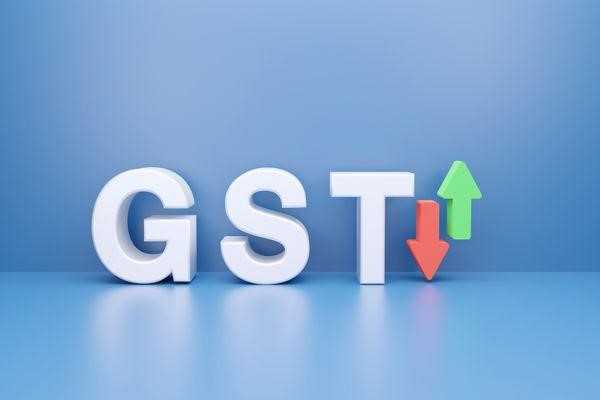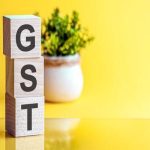A Comprehensive Guide On UTGST Act In The Union Territories Of India

The UTGST Act expands the Union Territory Goods and Service Tax. UTGST, Union Territory Goods and Services Tax, is a GST applicable on the goods and services supply that takes place in any of the union territories of India.
The Goods and Services Tax (GST) is applied to the sale of goods or services within a State or a UT and outside. However, when goods are moving intra-State, an SGST (State GST) is applicable. When it comes to union territories, the SGST does not apply. If the goods or services are supplied intra-UT, the UTGST is applied.
As such, if you supply goods or services to a union territory or if you live in a UT and supply goods and services to another State, knowledge of the UTGST is essential. So, let’s understand what UTGST is and how it works.
What is UTGST?
The full form of UTGST is Union Territory Goods and Services Tax. The rules for UTGST are specified under the Union Territory Goods and Services Act, 2017. While the Act was passed by the Parliament, the President governed each UT. The President appoints an Administrator on his behalf who, in turn, appoints commissioners and officers to administer UTGST rules.
UTGST is a form of GST applicable when goods or services are supplied intra-UT, i.e., within a union territory. In these cases, SGST cannot be applied in the case of UTs that do not have a legislature. Furthermore, besides the UTGST, the CGST (Central GST) is also charged for such a supply of goods or services.
UTGST Act 2017
As mentioned earlier, the rules of UTGST are contained in the UTGST Act. This Act was passed in 2017 so that the Government could lay down rules for GST in union territories.
The UTGST Act, 2017 encompasses guidelines related to the following –
- The levying and collection of GST in the intra-UT supply of goods and services
- The power to allow exemption from the tax liability
- Transfer of the Input Tax Credit
- Recovery of pending tax
- Payment of tax
- Other transitional provisions, etc.
UTGST Regions
There are nine identified union territories in India. For UTGST, only six UTs are recognised. These six territories comprise the UTGST States, which are as follows –
- Lakshadweep
- Andaman & Nicobar Islands
- Dadra & Nagar Haveli
- Daman & Diu
- Chandigarh
- Ladakh
In the case of New Delhi and Puducherry, though they are Union Territories, they have a legislature of their own. As such, in these States, SGST is applicable, not UTGST. Moreover, in the case of Jammu and Kashmir, the J&K GST (Jammu & Kashmir GST) is applicable since the UT has its own legislature.
Features of UTGST
Here are some of the salient features of UTGST that you should know about –
- When Ladakh separated from Jammu & Kashmir, it became a union territory. However, Ladakh does not have its own legislature and is, thus, eligible for the UTGST rules.
- However, in the case of Jammu & Kashmir, there is separate legislation governing the UT. As such, UTGST is not applicable. A new GST Act, the J&K GST Act, was passed, which lays down the GST rules for Jammu & Kashmir.
- UTGST is similar to SGST. The only difference is that UTGST is meant for territories without a legislature while SGST is meant for States with their own legislature.
- The UTGST rate is not fixed and might vary depending on the recommendations of the GST Council.
- There might be an UTGST invoice format which you would have to follow when issuing bills.
Also Read
UTGST Tax Rates
The GST Council is empowered with authority to make changes to the rates of GST, including UTGST rates. The UTGST rates are similar to the SGST rates. Moreover, the Central Government has the power and authority to recommend rate changes to the GST Council.
The UTGST tax rates differ across different types of goods and services. There are five slabs of UTGST rates which are as follows:
- 0% (This slab includes goods and services that do not attract UTGST)
- 5%
- 12%
- 18%
- 28%
Applicability of UTGST
If any business in a union territory supplies goods or services to another business or even an individual, an output tax liability is created on such supply. If the supply is within the same union territory, UTGST becomes applicable, along with CGST. If the supply is out of the union territory, then IGST would be applicable, not UTGST or SGST.
Here’s a quick look at when UTGST becomes applicable and when it doesn’t
| Movement of Goods or Services | Applicability of GST |
| Within the Union Territory | UTGST + CGST under Section 8(1) and 8(2) of the IGST Act |
| From one Union Territory to another | IGST under Section 7(1) and 7(3) of the IGST Act |
| From a Union Territory to a State or vice-versa | IGST under Section 7(1) and 7(3) of the IGST Act |
How is UTGST Charged?
There are three different instances of how UTGST can be charged. These instances and their UTGST rules are as follows:
1. UTGST Charged on a Forward Charge Basis
In the case of the intra-UT supply of goods, except the supply of alcohol meant for human consumption, UTGST is charged. The UTGST is levied under Section 15 of the CGST Act, 2017. The rate of UTGST would be determined by the GST Council on the recommendation of the Central Government. UTGST would be collected in a manner specified by the GST Council and paid by taxpayers.
The business that supplies goods or services is responsible for collecting UTGST from the recipients of such goods and services. The business then deposits the collected UTGST to the Government. This process of charging UTGST in the hands of the supplier of goods or services is called charging tax on a forward charge basis.
2. UTGST Charged on a Reverse Charge Basis
In some cases of supply, the Central Government specifies tax to be levied on a reverse charge mechanism. Under the reverse charge mechanism, the supplier is not liable to pay UTGST on the supplies. Instead, the recipient of the goods or services is required to pay the applicable UTGST.
Moreover, if a supplier unregistered under GST supplies goods or services to a registered individual or business, the liability of paying UTGST would fall on the recipient and the reverse charge mechanism would become applicable.
3. UTGST Charged for e-commerce Operators
In the case of e-commerce operators, the UTGST rules might vary if the supply of the goods is intra-UT and an e-commerce operator is making the supply. In such cases, the e-commerce operator would be liable to pay UTGST.
Example of How UTGST is Charged
Here is a quick example of how UTGST is charged on the intra-UT supply of goods and services.
M/S ABC Limited supplies goods worth Rs.10 lakhs from their Chandigarh warehouse to a retailer in Chandigarh. They also supply goods worth Rs.5 lakhs from Chandigarh to New Delhi. The applicable GST rate on the goods is 12%.
Here’s a look at the relevant GST that would be charged and how it would be calculated:
| Value of goods supplied | Details of movement | Type of supply | Applicable GST | Calculation |
| Rs.10 lakhs | From Chandigarh to Chandigarh | Intra-UT supply | CGST @ 6% +UTGST @ 6% | CGST = 6%% of Rs.10 lakhs = Rs.60,000UTGST = 6% of Rs.10 lakhs = Rs.60,000Total GST payable = Rs.1.2 lakhs |
| Rs.5 lakhs | From Chandigarh to New Delhi | Inter-State supply | IGST @ 12% | 12% of Rs.5 lakhs = Rs.60,000 |
When goods are moved within the Union Territory, UTGST is applicable. However, once the goods moved out of the UT, IGST (Integrated GST) was applicable.
Differences Between CGST, SGST, UTGST and IGST
The Central GST (CGST), State GST (SGST), Union Territory GST (UTGST) and Integrated GST (IGST) are all different from one another. The following table shows the difference –
| Points of Difference | CGST | SGST | UTGST | IGST |
| Definition | CGST is charged by the Central Government on intra-State supply of goods or services | SGST is charged by the State Government on intra-State supply of goods or services in that particular State | UTGST is charged by the Central Government on the intra-State supply of goods or services within a union territory | IGST is charged by the Central Government on the inter-State or inter-UT movement of goods or services. The tax collected under IGST is, then, divided between the Central Government and the respective State Government in whose State the goods are consumed. |
| Governing Act | Governed by the Central Goods and Services Act (CGST Act), 2017 | Governed by the State Goods and Services Act (SGST Act), 2017 | Governed by the Union Territory Goods and Services Act (UTGST Act), 2017 | Governed by the Integrated Goods and Services Act (IGST Act), 2017 |
| Application | Applicable when the supplier and recipient are in the same State or Union Territory | Applicable when the supplier and the recipient are in the same State | Applicable when the supplier and the recipient are in the same Union Territory | Applicable when the supplier and the recipient are in different States or Union Territories |
| Taxes that the GST Replaced | CGST replaced service tax, central excise duty, additional customs duty, special additional duty of customs and the excise duty applied on medicinal and toiletries preparations | SGST replaced Sales tax, VAT, luxury tax, purchase tax, octroi, entertainment tax, tax on gambling, lottery or betting | UTGST replaced Sales tax, VAT, luxury tax, purchase tax, octroi, entertainment tax, tax on gambling, lottery or betting | NA |
| Claiming Input Tax Credit | Input tax credit can be claimed against CGST and then IGST | Input tax credit can be claimed against SGST and then IGST | Input tax credit can be claimed against UTGST and then IGST | Input tax credit can be claimed against IGST, CGST and SGST |
| Composition Scheme | Composition scheme is available | Composition scheme is available | Composition scheme is available | Composition scheme is not available |
| Registration under GST | GST registration is required if annual turnover is above Rs.40 lakhs. In the case of services, the limit is Rs.20 lakhs. Moreover, for special States, the limit is Rs.20 lakhs over which registration becomes necessary | GST registration is required if annual turnover is above Rs.40 lakhs. In the case of services, the limit is Rs.20 lakhs. Moreover, for special States, the limit is Rs.20 lakhs over which registration becomes necessary | Registration for GST in Union Territory is required if annual turnover is above Rs.40 lakhs. In the case of services, the limit is Rs.20 lakhs. Moreover, for special States, the limit is Rs.20 lakhs over which registration becomes necessary | GST registration is mandatory irrespective of the annual turnover if there is an inter-State or inter-UT supply of goods or services |
Final Word
If you are a registered business in a union territory or if you would be registering your business under GST, understand what Union Territory GST is and how it is applicable. Comply with the UTGST rules of your union territory, design your invoices in UTGST bill format and pay your GST liability on time to avoid penalties.
FAQs on UTGST
Ans: No, there is a particular order for claiming the input tax credit. The credit can first be claimed against the respective CGST, UTGST or SGST. Thereafter, the remaining credit can be set off against IGST.
Ans: The GST Council determines the UTGST rates.
Ans: If the good attracts 0% UTGST, no tax would be payable on its supply.
Ans: The Central Government collects the UTGST collected from recipients or suppliers.
Read More on Income Tax Act

Customer’s Feedback
No comments found.What is Form 26QB for TDS? How to Download and Submit it?
While purchasing a property, buyers are liable to pay various taxes. The Finance Act, 2013 made TDS... Read More »PF Withdrawal Rules 2023 – Rules, Documents Required and Types
EPF/PF Withdrawal Employees’ Provident Fund (abbreviated as EPF) is a popular retirement sav... Read More »Stamp Duty and Property Registration Charges in Delhi 2023
It is compulsory for property buyers in the Capital to pay stamp duty in Delhi during property regi... Read More »Income Tax Return – Documents, Forms and How to File ITR Online AY 2023-24
In India, it is mandatory for all taxpayers who earn more than the basic tax exemption limit to fil... Read More »What is Section 80CCD – Deductions for National Pension Scheme and Atal Pension Yojana
The Income Tax Act provides a number of deductions and tax benefits to taxpayers, so they can strat... Read More »Tax on Dividend Income: Sources, Tax Rate and TDS on dividend income
What are Dividends? Companies may raise funds for running their operations by selling equity. Th... Read More »Section 112A of Income Tax Act: Taxation on Long-Term Capital Gains
What is Section 112A? Section 112A of the Income Tax Act was announced in Budget 2018 to replace... Read More »Section 206AB of Income Tax Act: Eligibility And TDS Rate
Section 206AB was introduced in the Finance Bill 2021 as a new provision pertaining to higher deduc... Read More »What is a Credit Note in GST – Example, Format and Steps
A GST Credit Note is mandatory for any GST-registered supplier of goods or services. As a supplier,... Read More »Exemptions and Deductions Under Section 10 of Income Tax Act
What Is Section 10 of the Income Tax Act? Section 10 of the Income Tax Act, 1961 provides tax-sa... Read More »Section 57 of the Income-tax Act – Income from Other Sources
It is quite likely that many entities - individuals as well as businesses - have multiple sources o... Read More »What is Dearness Allowance? – Types, Calculation, and Current Rate
What is Dearness Allowance? Dearness Allowance Meaning - Dearness Allowance (DA) is an allowance... Read More »Top 10 Chit Fund Schemes in India in 2023
Chit funds are one of the most popular return-generating saving schemes in India. It is a financial... Read More »10 Best Gold ETFs in India to Invest in April 2023
Gold ETFs or Gold Exchange Traded Funds are passively managed funds that track the price of physica... Read More »10 Best Demat Accounts in India for Beginners in 2023
Creation of Demat accounts revolutionised the way trades were conducted at the stock exchanges. It... Read More »20 Best Index Funds to Invest in India in April 2023
What is an Index Fund? An index fund is a type of mutual fund or exchange-traded fund (ETF) that... Read More »Best Arbitrage Mutual Funds to Invest in India in April 2023
Arbitrage funds are hybrid mutual fund schemes that aim to make low-risk profits by buying and sell... Read More »10 Best SIP Plans in India to Invest in April 2023
What is SIP? SIP or Systematic Investment Plan is a method of investing a fixed amount in ... Read More »10 Best Corporate Bond Funds in India to Invest in April 2023
Corporate bond funds are debt funds that invest at least 80% of the investment corpus in companies ... Read More »10 Best Bank for Savings Account in India [Highest Interest Rate 2023]
Savings account is a type of financial instrument offered by several banks. It lets you safely depo... Read More »






















